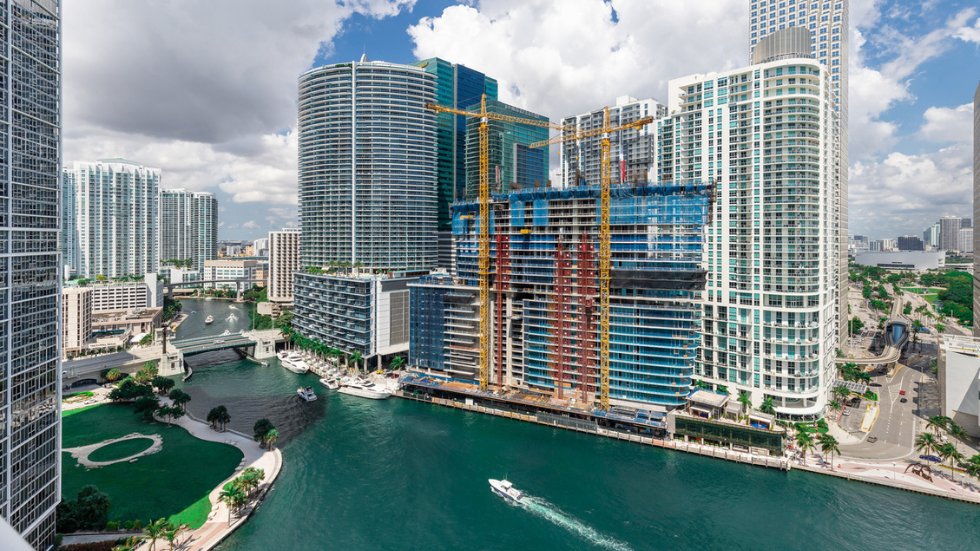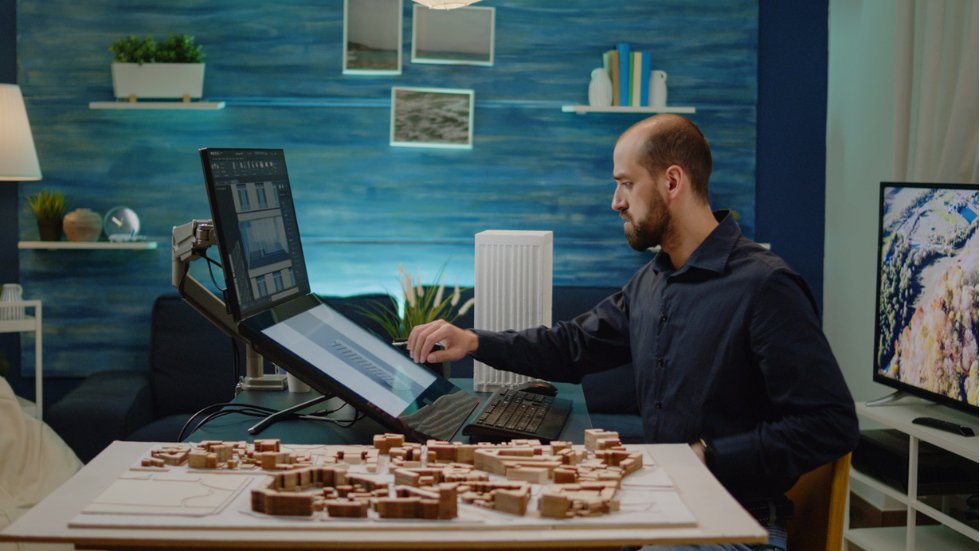- Human-AI collaboration reduces expensive delays, improves accuracy, and helps applicants submit higher-quality plans in the building permit review process.
- Explainable AI in building permit software creates consistency and trust—supporting plan reviewers while freeing them to focus on safety, complexity, and subjective decisions.
- Faster, more predictable building permit review processes lower carrying costs, attract development, and strengthen housing supply and affordability.
According to Architecture 2030, a nonprofit focused on transforming the built environment to mitigate the climate crisis, the global building floor area is expected to double between 2020 and 2060. To put that in perspective, the organization says it’s “the equivalent of adding an entire New York City to the world, every month, for 40 years.”
That’s a lot of building capacity for cities to manage—without enough city planners or plan checkers to keep up with the pace of approving permits.
And what happens if they can’t keep up? In the worst-case scenario, projects get shelved because homeowners and developers can’t afford the carrying costs during permitting delays.
In its 2023 site plan review report (p. 15), the City of Austin revealed just how painful carrying costs can be: $9,700 per month for a single-family home redevelopment (with a property value of ~$566K) and $546,000 per month for a multi-family residential development (with a property value of ~$38M).

Construction in the Brickell Key area of Miami, FL
For some of the largest projects, it’s even worse. At the America Business Forum this month, Miami Mayor Francis Suárez said, “A big building in Miami is a multibillion-dollar enterprise, so you’re talking about half a billion, a billion dollars in lending costs. The daily carrying cost—one day of interest—is $200,000 to $400,000 per day.”
Nobody wants this—not cities, architects, contractors, developers, or homeowners. But there’s a solution. It comes down to AI-human collaboration, with AI assisting and augmenting city planners and plan reviewers.
AI is not replacing people in this space because the building industry needs all hands on deck, and people will always be needed to make subjective decisions. Without both humans and AI working together, doubling the global building floor area by 2060 is nothing but a pipe dream.
Putting Trust in AI for Building Permit Review
When some plan reviewers hear how AI will automate parts of the permit review process, the immediate fear is, “It’s going to automate my job.”
But that’s not the case. While AI drives efficiency, it’s not a superpower for the building industry unless it’s paired with smart humans.
The World Economic Forum hits the nail on the head about keeping human experts in the loop: “Leaders who chase efficiency and productivity gains without investing in human adaptability end up with brittle systems and burned-out teams,” it says. “The more valuable approach is to treat AI as a partner that builds resilience by amplifying human capacity rather than sidelining it.”
But for AI to amplify plan reviewers’ human capacity, they need to want to adopt AI, which means they must trust that it won’t fail them. One of the scariest things about AI is the black-box nature of it. You ask it something, and it gives you an answer. But then you wonder, “How did it do that?”
The way we’ve trained up our AI platform, Archistar eCheck, it’s a combination of computer vision, machine learning, and deterministic rules. That means the compliance checks of building plans come in the same every time, so you don’t get hallucinations, variations, or random suggestions.
Building codes and zoning laws are complex, and they involve calculations. But with the right training, AI-powered building permit software leaves no room for doubt.
Explainable AI is the key. Plan reviewers use AI to fast-track everything, and they need the AI’s output to be explainable. How did it come up with that answer? If applicants (e.g. architects) have no explanation for why they failed a certain check, such as allowable floor area, then how would they know how to fix it?

A+ Submissions With Help From AI
Submitting your application for plan review is like taking a test. The better that applicants lay out their arguments and responses to the questions, the more likely they’re going to pass.
A 100% accurate AI permit review platform can give applicants specific guidance to present their proposals in the best possible way to a city. If applicants propose their submissions in a way that makes it easier on the other side, they’re going to go through the process faster.
Someone still has to check the submissions. But at the end of the day, it’s a dream for plan reviewers to have everything presented nicely, so they can do their jobs properly. That way, they don’t have to dig through papers like detectives, trying to find information rather than focusing on assessments.
The ultimate result is when AI gets everything perfect and streamlined. It means plan reviewers can get permits out the door faster, and people can build homes faster. That’s how we start to solve the housing-affordability crisis.
The upside of getting it right with AI is not a doomsday event, like the Terminator coming in, blowing up the world, and taking everyone’s jobs. The more AI can augment architects and plan reviewers, the more capacity they will have to get projects out the door.

View of construction in Austin, Texas from Zilker metropolitan park, January 2025
Confidence Creates City Growth
When AI-human collaboration goes well, it gives everyone more confidence. Bringing certainty to the permit process through AI means that projects cost less money for developers and homeowners, and city employees save hours of time.
A fast and efficient process is also attractive to developers because they can work on more projects. Cities may see increased volume because developers know the process is going to be good. If it’s a terrible process that will take a long time, developers will avoid it.
This gives city managers in smaller cities a chance to compete against larger municipalities. If they can demonstrate to the community that they’ve got an innovative, streamlined process, they’re going to encourage development. People will invest in their city because they will naturally pick the cities where it’s going to make the most sense.
Complexity and Subjectivity Are For Humans
I believe it’s good for the world that AI keeps getting better. The housing crisis is too big and complex for the building industry to stay the way it is.
Take a 50-story tower or a mixed-use precinct: There are many people going in and out of these buildings who must trust that they’re safe. To make that possible, there needs to be checks and balances. That’s where you want to put your attention and your smartest reviewers—on the projects that affect the most people.
Meanwhile, with reliable and accurate AI, plan reviewers could approve a shed or an ADU automatically. AI is great at detecting straightforward tasks. For example, do you have a smoke detector in each bedroom? That’s a very basic, simple check. Is the bedroom the right size? Is the hallway the right minimum width?
I’ve talked to a lot of chief building officials on the building code side, and they support letting the computer review those standard checks. What they want to focus on is life and safety—looking at the overall buildings. Where does the building structure flow? Can people get out of this building if it’s on fire?
The more expert knowledge and attention they can apply to that, the better. It’s surprising how often building designs are eventually destined to fail. When they get more complex, there needs to be more human logic.
Then there are more subjective considerations. For example, does this house match the character of the street? Every property is different; every design is different; and every city is different. A property could be in an earthquake zone or a fire zone—or both.
You need someone to look at individual circumstances and make expert decisions. Is the design in line with the principles of local building codes and zoning, even if the property doesn’t meet the standard?

AI Creates Meaningful Trends
Every submission that goes through eCheck is digital and structured data, so with large data sets, we at Archistar are starting to see predictive analytics trends showing where things go right or wrong.
AI uses unsupervised learning to cluster its findings from pass and fail reports. For example, in one set of 38 submissions, 58% failed for not having enough trees in the site plans.
At an aggregated level, applicants and cities can start to understand trends and predict where things are going. If cities know that 70% of applicants get a certain aspect of their submissions wrong, the cities can figure out how to fix it—possibly by educating applicants more or by modifying policies.
And the more data you get, the more examples AI has to cluster, so it can make better predictions.
The Future of Compliant Generative Design
This is an exciting space that is going to make a big impact. Collaboration between humans and AI is becoming increasingly sophisticated and efficient.
In the future, architects won’t only use AI as a post-check in their designs. There will be real-time checks during the design process for continual feedback on code and zoning compliance. So, by the time an architect finishes the first iteration of a design, it will be compliant already.
While studying for my PhD in Architecture over 10 years ago, I learned that generative design could create a thousand options in one minute, but no human can evaluate that many options. They need real-time compliance and analysis built into the generative design, which will compress design and approval cycles.
When that happens—and I’m optimistic that will be in the near future—human-AI collaboration will be the catalyst to drive the building industry forward, increase housing supply and affordability, and improve many lives.

